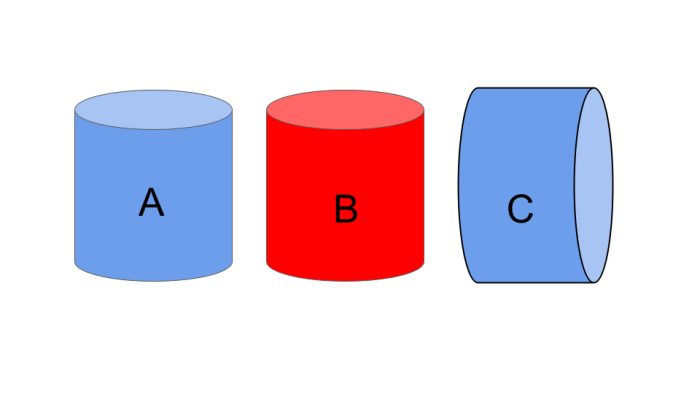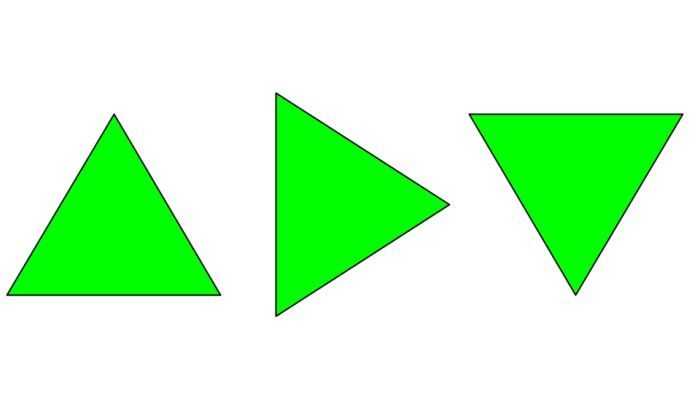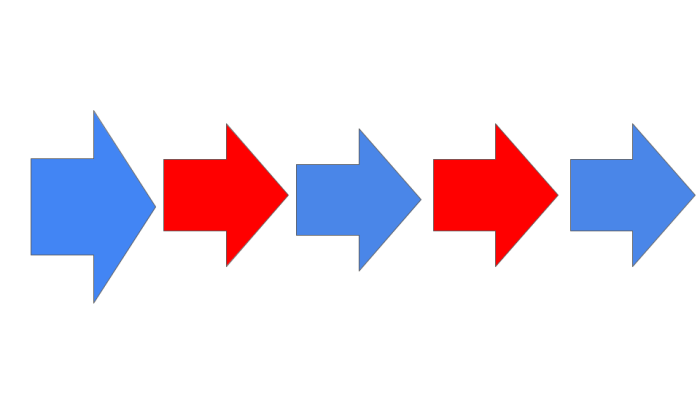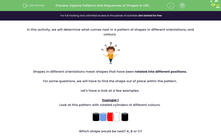In this activity, we will determine what comes next in a pattern of shapes in different orientations, and colours.

Shapes in different orientations mean shapes that have been rotated into different positions.
For some questions, we will have to find the shape out of place within the pattern.
Let's have a look at a few examples.
Example 1
Look at this pattern with rotated cylinders of different colours.

Which shape would be next? A, B or C?

The pattern is black cylinder upright, blue cylinder upright, red cylinder on its side, white cylinder on its side, and then repeat.
The pattern has finished on black cylinder upright. If we look back at the pattern and see what comes after it, is the blue cylinder upright which is shape A.
Example 2
Look at this pattern of rotating triangles.

Which triangle would come next? A or B?
.png)
The answer is B. The triangle is moving a quarter turn clockwise each time. Clockwise means turning the same way a clock's hands would move. Here, there are red dots at the top point of the triangle to help us to see how it has rotated:
.png)
Example 3
Which shape is the odd one out in this pattern?

Here, we have a pattern of arrows. The arrows don't change orientation, but they do change colour between blue and red.
Which arrow looks out of place? It is the first arrow because it is a different size to the others!
So this is the arrow that is the odd one out.

Ok, are you ready to tackle some questions?







